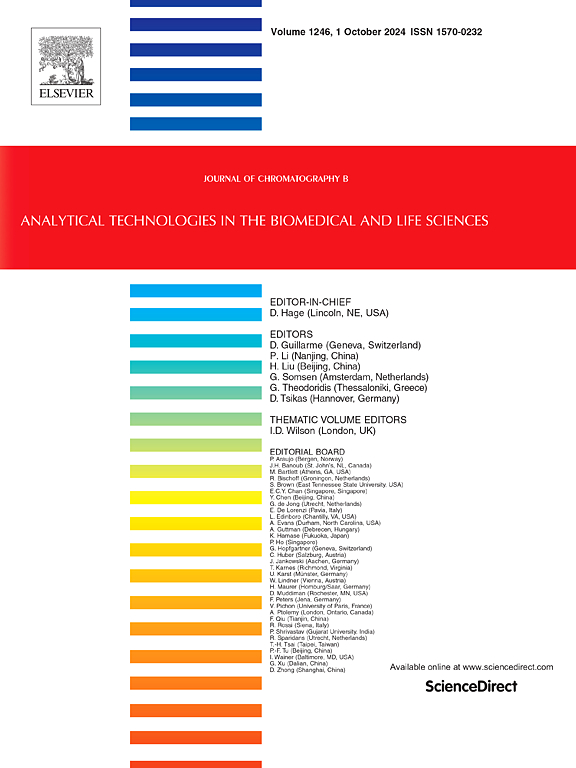Preparation of the immobilized α1A-adrenoceptor column by the ultra-high affinity protein pair CL7/Im7 and its application in drug-protein interaction analysis
IF 2.8
3区 医学
Q2 BIOCHEMICAL RESEARCH METHODS
引用次数: 0
Abstract
Immobilizing the target protein on a solid surface with controlled orientation, high specificity, and maintained activity is a proven strategy to enhance the stability of the protein. In this study, we employed an ultra-high affinity protein pair consisting of a mutant of colicin E7 Dnase and its corresponding inhibitor, immunity protein 7(Im7), to develop an immobilized α1A-adrenoceptor (α1A-AR) column. Briefly, we expressed α1A-AR fused with CL7 as a tag at its C-terminus in Escherichia coli cells. Meanwhile, we got His-tagged Im7 at the same manner. Following purification, the His-tagged Im7 was utilized to functionalize the macro-porous silica gel. Leveraging the ultra-high affinity between the protein pair, we achieved robust and specific covalent immobilization of α1A-AR covalently at ambient conditions in buffer solutions, without the requirement for additional regents. The successful immobilization of the receptor, without extraneous protein adsorption, was confirmed through X ray photoelectron spectroscopy and chromatographic investigations. Frontal analysis and adsorption energy distribution analysis further validated the feasibility of the immobilization method. Our findings align well with those reported in the literature. This work is poised to provide a modular platform for conducting effective investigations into the binding interactions between other functional proteins and the drugs.
求助全文
约1分钟内获得全文
求助全文
来源期刊

Journal of Chromatography B
医学-分析化学
CiteScore
5.60
自引率
3.30%
发文量
306
审稿时长
44 days
期刊介绍:
The Journal of Chromatography B publishes papers on developments in separation science relevant to biology and biomedical research including both fundamental advances and applications. Analytical techniques which may be considered include the various facets of chromatography, electrophoresis and related methods, affinity and immunoaffinity-based methodologies, hyphenated and other multi-dimensional techniques, and microanalytical approaches. The journal also considers articles reporting developments in sample preparation, detection techniques including mass spectrometry, and data handling and analysis.
Developments related to preparative separations for the isolation and purification of components of biological systems may be published, including chromatographic and electrophoretic methods, affinity separations, field flow fractionation and other preparative approaches.
Applications to the analysis of biological systems and samples will be considered when the analytical science contains a significant element of novelty, e.g. a new approach to the separation of a compound, novel combination of analytical techniques, or significantly improved analytical performance.
 求助内容:
求助内容: 应助结果提醒方式:
应助结果提醒方式:


